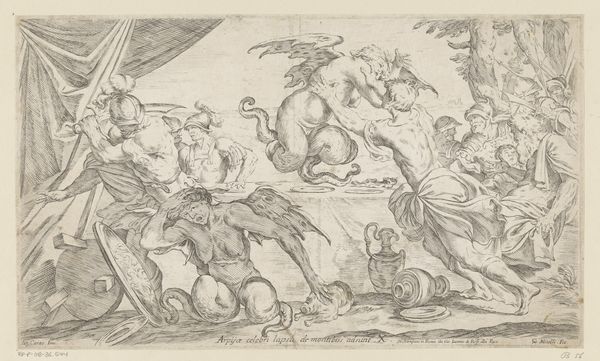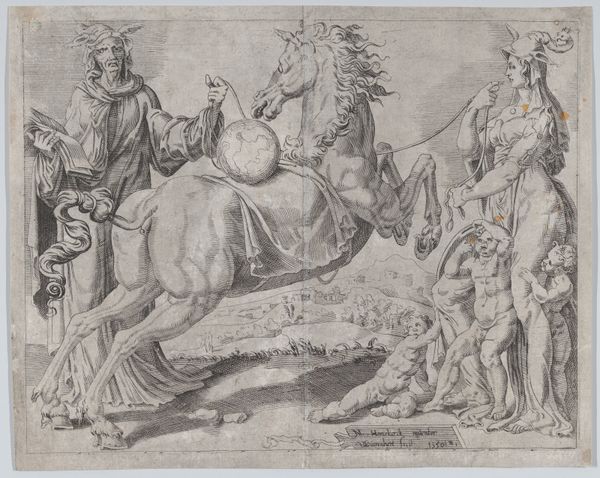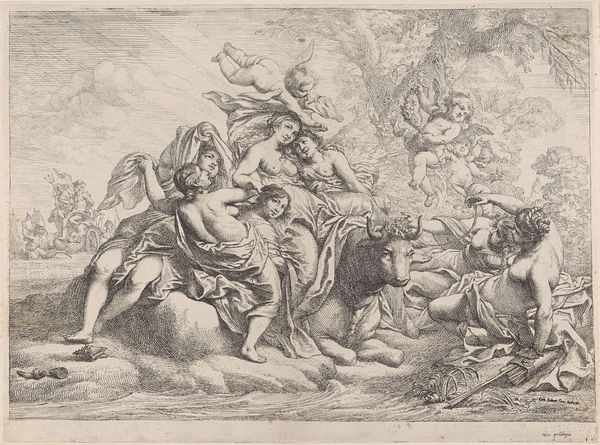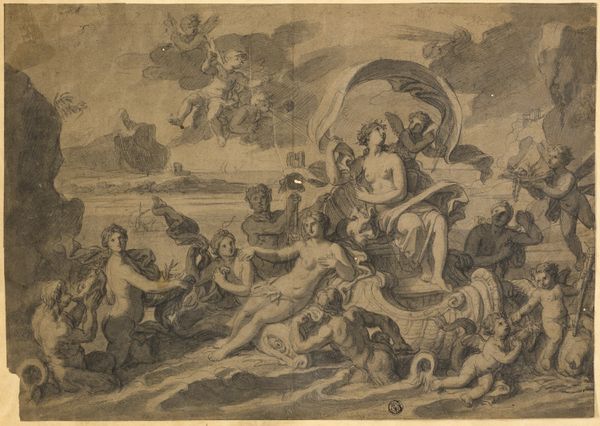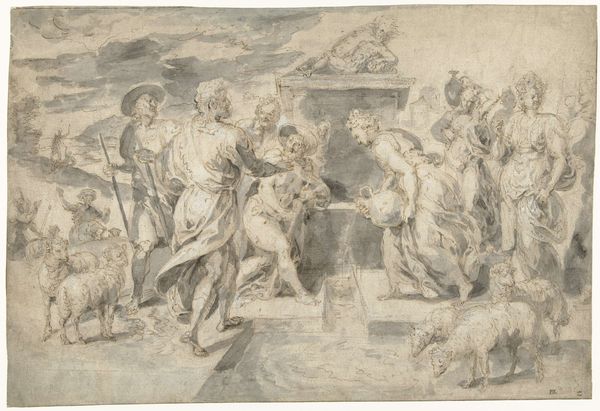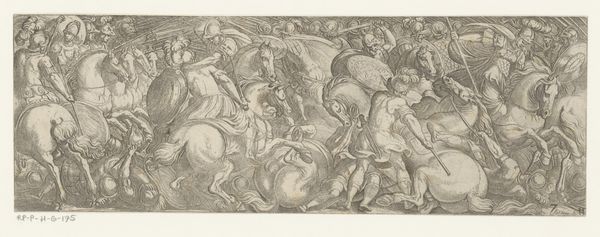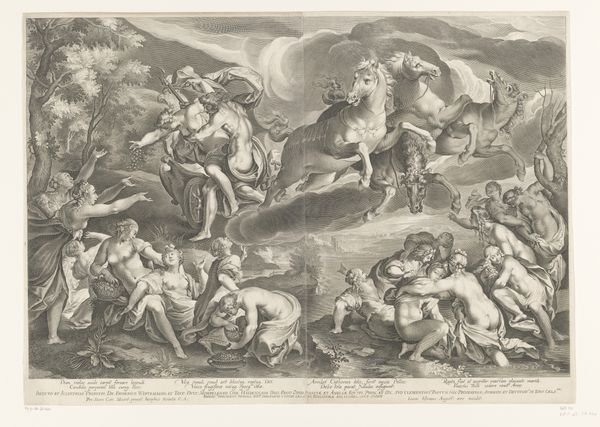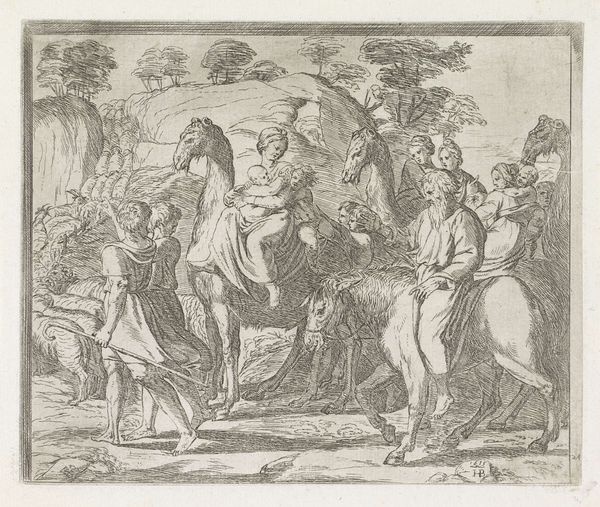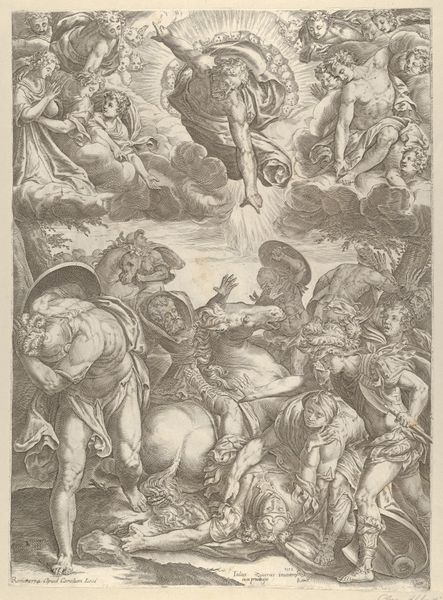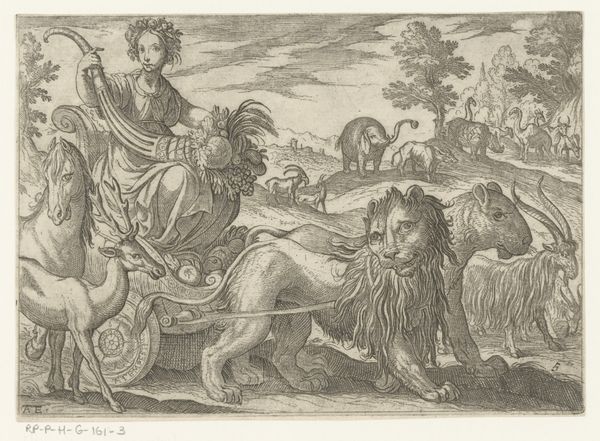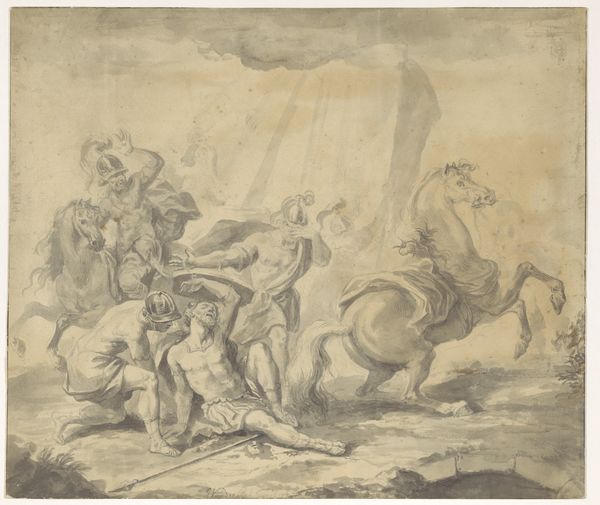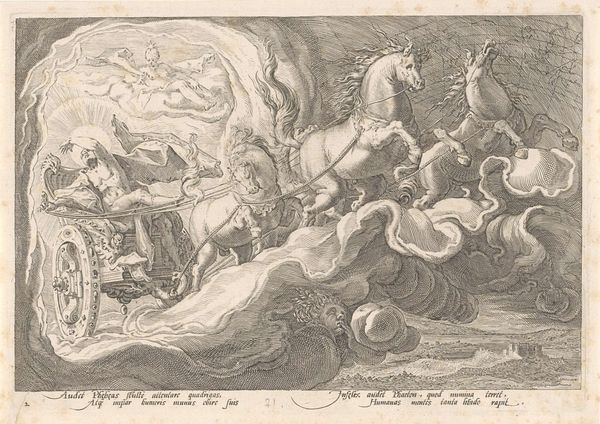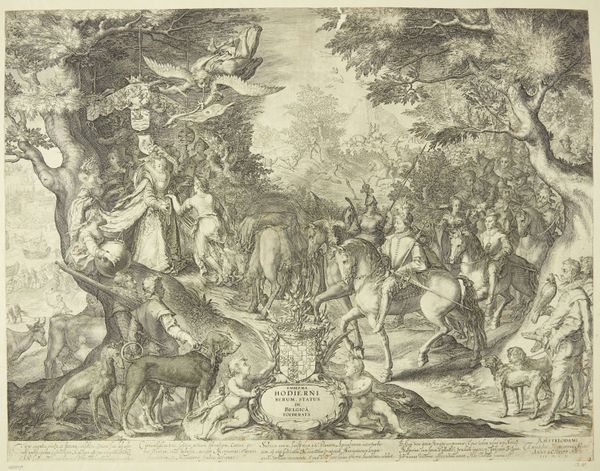
Allegory of Europe, from the Four Continents 1728 - 1774
0:00
0:00
drawing, print, engraving
#
portrait
#
pencil drawn
#
drawing
#
allegory
#
baroque
# print
#
landscape
#
charcoal drawing
#
figuration
#
pencil drawing
#
horse
#
men
#
history-painting
#
musical-instrument
#
academic-art
#
engraving
Dimensions: 9 1/4 x 13 3/16 in. (23.5 x 33.5 cm) (irregular)
Copyright: Public Domain
Editor: We're looking at Gottfried Bernhard Goetz's "Allegory of Europe, from the Four Continents," created sometime between 1728 and 1774. It’s an engraving, and what strikes me is how this regal female figure on horseback contrasts with the more subdued, almost chaotic activity surrounding her. How do you interpret this work? Curator: The Baroque period frequently utilized allegory to communicate power structures and cultural ideals. But consider who is absent. What does it mean that "Europe" is elevated above representations of other continents? The "allegory" flattens complex geopolitical relationships into a hierarchy. Who benefited from this hierarchy and who was subjugated? Editor: It’s interesting how the piece is titled as being “from” the Four Continents, as though Europe were somehow separate or superior to the rest. The way the other figures are drawn feels…secondary, almost like props in a play. Curator: Precisely. These allegories often served as justifications for colonial expansion and exploitation. Note the symbols around the base – musical instruments, globes, and what looks like trade goods. These objects subtly signify control, ownership, and perhaps even the extraction of resources from other lands, masked by the pretense of a noble representation of a continent. Editor: So the “triumph” isn’t just a celebration but a statement of dominance. Were there contemporary critiques of this perspective, or was this pretty standard thinking at the time? Curator: While works like these reinforced dominant ideologies, there were certainly dissenting voices. Intellectuals were beginning to question the divine right of kings and the moral implications of colonialism. It’s crucial to see this piece not as a neutral depiction but as an active participant in a larger discourse about power and identity. What this artist chooses to celebrate is of immense importance, but it's more telling when we analyse that which he omits. Editor: That definitely shifts my understanding of the artwork. I initially saw it as just a display of wealth and power, but it’s more like propaganda. Curator: Exactly. Examining the historical context alongside the artistic techniques allows us to critically engage with these historical narratives and, more importantly, think about its contemporary meaning.
Comments
No comments
Be the first to comment and join the conversation on the ultimate creative platform.
